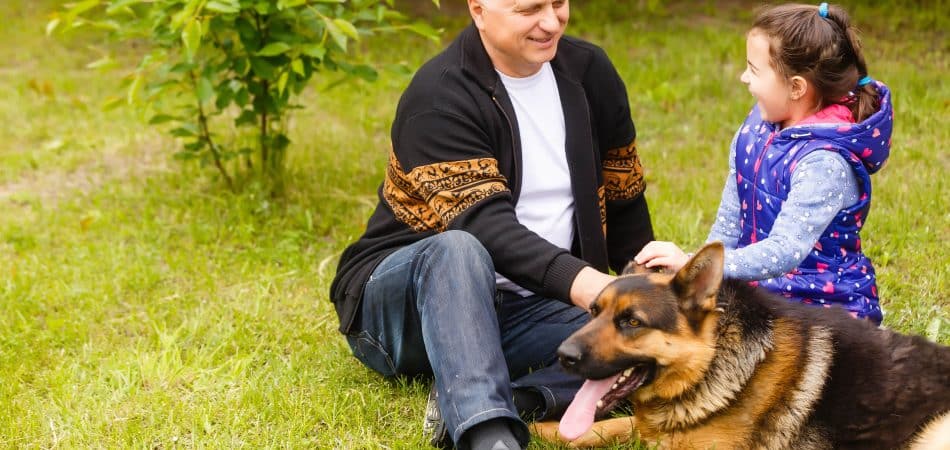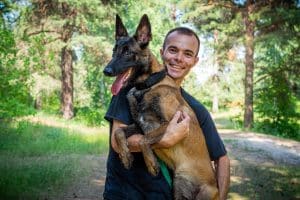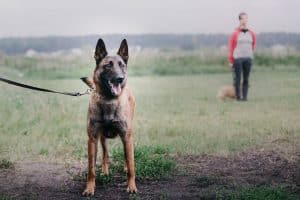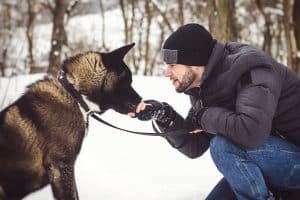






Bringing a new protection dog into your home is a moment filled with excitement, anticipation, and—if we’re being honest—a little uncertainty.
You want to get it right. You want to build something real. A connection that goes beyond food, beyond toys, beyond a simple exchange of action and reward.
But somewhere along the way, we were sold the idea that dogs need to be “paid” for their behavior. They won’t listen unless there’s something in it for them. Like tiny, furry employees clocking in and waiting for their paycheck.
I get the logic. You wouldn’t go to work for free, right? So why would your dog?
And yet…that’s not how real bonds work.
Your protection dog doesn’t guard your home because you waved a treat in his face. He doesn’t follow your command because he’s hoping for a toy at the end of it. He works for you because of something deeper. Something built over time.
Without that bond? You’re just a vending machine. A transaction. A means to an end.
But with a bond? You’re a team. A pack. A force to be reckoned with.
So how do you create that kind of bond? The kind that stands the test of time—the kind that, if it came down to it, your dog would walk through fire for you?
Before we proceed, let’s discuss….
 Training your protection dog should be centered around building a strong bond.
Training your protection dog should be centered around building a strong bond.
At Vanguard Protection Dogs, we train using a bond-based approach. Anyone who’s been through the program knows exactly what that means.
They don’t just end up with a well-trained dog—they have a dog completely attuned to them, who works for them out of devotion, not for a bite of food or a tug on a toy. They work for love.
And that’s because dogs were built for this.
Thousands of years ago, certain wolf ancestors figured out that sticking close to humans was a pretty good deal. They got food, shelter, and protection in return for their skills—hunting, guarding, herding.
Over generations, we refined those instincts. We bred retrievers to fetch, border collies to herd, huskies to pull sleds, and, yes, protection dogs to guard.
But at their core, dogs haven’t changed.
Strip away the training, the commands, the structured drills, and what’s left? An animal hardwired for connection. A being that looks to us for leadership, approval, and purpose.
And after decades of working with dogs, I can say this with certainty—above all else, they just want to belong.
The best training sessions should feel like teamwork. When you engage with your dog—through play, challenge, and interaction—the process becomes something they enjoy, not just something they perform. Training should be a conversation, not a set of rigid commands.
And one of the most powerful yet overlooked aspects of that conversation? Eye contact.
Trainers talk about the importance of using marker words like “yes,” the value of leash work, and the timing of rewards. But eye contact? It barely gets a mention. Yet, in my experience, it’s one of the most potent tools for communication.
Think about it—80% of human communication is nonverbal, and that’s in a species that relies on language. With dogs, I’d argue that at least 99% of their communication happens without words.
They don’t just listen to what you say; they watch everything you do.
And when a dog makes eye contact with you, they’re not just looking—they’re asking. Asking for direction. For leadership. For clarity.
And here’s something most people miss—eye contact strengthens the bond. A dog that trusts and respects you will naturally seek it out.
But what if your dog avoids eye contact? That’s a sign of uncertainty. They may not fully trust you yet, or they’re unsure of their place in the relationship.
So here’s my advice: when your dog locks eyes with you, use it. Be intentional. If you want to give direction, give it. Use positive reinforcement to encourage eye contact.
But don’t stare them down aimlessly—prolonged eye contact is intense. Try maintaining unbroken eye contact with another person for more than a few seconds, and you’ll see what I mean.
It comes down to three core elements: trust, communication, and leadership.

Dogs thrive on predictability. If the rules shift from day to day, confusion sets in. Clear expectations, reinforced consistently, create a sense of security.
Reliability is just as crucial. If you call your dog and then punish him for whatever he did before coming, you’ve just shattered the very trust you’re trying to build. He needs to know that coming to you is always safe.
And fairness? It’s the difference between leadership and fear. Your dog isn’t a machine—he’ll make mistakes. Correct him, but never in a way that creates fear or uncertainty. Respect isn’t commanded; it’s earned.
Most people think communication with dogs is about commands—sit, stay, heel. But real communication is deeper than words. It’s body language, energy, and presence.
Want to communicate effectively?
Always pay attention to your dog’s signals. Is he confused? Overwhelmed? Anxious? A great handler knows when to push and when to step back.
Instead of forcing compliance, build understanding.
Your dog takes his cues from you. If you hesitate, he hesitates. If you react emotionally, he mirrors that energy.
Show confidence. Set boundaries. Follow through.
A leader controls resources, from food to playtime to training, ensuring the dog earns privileges through respect and good behavior. Decision-making should always rest with you; a protection dog doesn’t get to choose when to bite or release—that’s your call.
Calmness under pressure is non-negotiable. If you panic, your dog will, too. But if you remain steady, he’ll trust your lead.
Your dog should instinctively check in with you before making a move in any situation—whether it’s training, a new environment, or a real-life threat. That’s leadership. Not through force, but through trust, clarity, and control.
While his primary role is to keep you safe, he also thrives on shared experiences.
The more your dog experiences life alongside you, the more attuned he becomes to your presence, emotions, and routines.
Take him on long walks where he can match your pace, observe the world beside you, and learn to read your body language in different environments.
Let him join you for a swim—many dogs love the water, and swimming is a fantastic way to exercise. Coffee runs? Bring him along. The sights, sounds, and interactions in public spaces reinforce trust and social adaptability.
Road trips and hikes offer even more opportunities to bond. Traveling together teaches your dog to rely on you in new surroundings, while hiking taps into his instincts—navigating terrain, staying close, and working as a team.
Even quiet moments at home—lounging on the couch, relaxing on the patio, or simply being in the same space—help solidify your bond.
Grooming, gentle touch, and casual play sessions strengthen the relationship, reinforcing that you’re not just his handler—you’re his person.
A protection dog should never feel like a tool that’s only “on duty” when needed. He should feel like a partner—one who understands, respects, and trusts you as much as you trust him.
Time spent together outside work transforms your relationship from obedience into something far more powerful—loyalty, trust, and an unbreakable connection.
4–8 weeks. Some dogs bond faster, while others take more time, depending on their personality, past experiences, and your approach as their new handler.
But before your dog even steps into your home, most trainers set the foundation for a smooth transition.
How do we go about it?

If possible, I highly recommend working with your dog before bringing them home.
Attending training sessions beforehand gives you the chance to familiarize yourself with the commands, understand how your dog responds, and establish expectations in a controlled environment. More importantly, it helps build rapport before they even step into your home.
This familiarity reduces stress and confusion during the transition.
For the dog, a new environment can be overwhelming. But if they already recognize you and your cues, they’ll settle in faster and feel more secure.
Even if in-person sessions aren’t an option, we provide detailed video training, handler instructions, and ongoing support to ensure you and your dog are fully prepared.
The goal isn’t just to train—it’s to create familiarity and confidence so that, by the time your dog joins your home, they already know they belong.
As I said earlier, the first 4–8 weeks solidify trust and build the foundation of your partnership.
Consistency is essential at this point—establishing a routine, maintaining clear expectations, and reinforcing training daily.
Your dog will be adjusting to new surroundings, new people, and a new structure. Patience is essential. Avoid overwhelming them with too much too soon. Instead, focus on creating a stable environment where they can learn to trust you.
Building a stronger bond with your protection dog starts with unlearning the myths about guard dogs. Forget the aggression, the outdated dominance tactics, and the belief that a working dog must be all business, all the time.
These dogs crave a connection, too—and that connection is what makes them truly effective.
A well-trained protection dog is a trusted partner, a member of your family, and a guardian that protects not out of fear but out of loyalty.
If you’re ready to experience the power of protection built on trust, contact Vanguard Protection Dogs today.